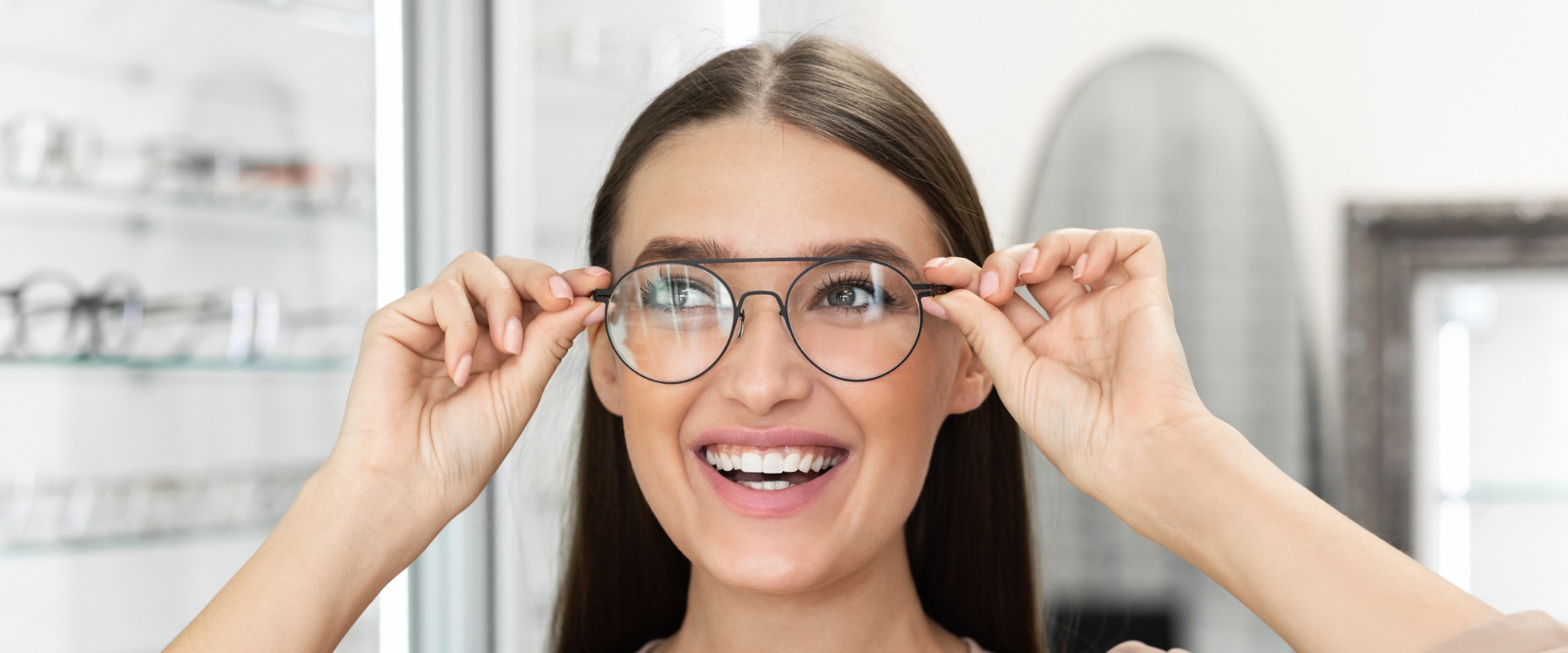Lens Options
There are many options available to enhance any lens. Depending on what benefits you want from your eyewear and which options may improve your vision, our opticians will work with your doctor to maximize your vision.
Anti-glare (AR)
Anti-glare, also referred to as anti-reflective, is an optical coating applied to lenses to reduce glare and reflections by increasing the amount of light passing through eyeglass lenses. It is the same coating that is applied to a camera or telescope lens. Our opticians prefer to dispense anti-glare lenses because the decreased reflections make them look better, and they produce less glare, which is particularly noticeable when driving at night or working in front of a computer monitor. The decreased glare means that wearers often find their eyes are less tired, particularly at the end of the day. Allowing more light to pass through the lens also increases contrast and therefore increases visual acuity.
Photochromic (Transitions, Photofusion)
Photochromic lenses are lenses that darken on exposure to specific types of light, most commonly ultraviolet (UV) radiation. Once the light source is removed (for example by walking indoors), the lenses will gradually return to their clear state. Photochromic lenses may be made of glass, plastic, polycarbonate, trivex or hi-index materials. Today, there are several options for photochromic lenses.
Transitions or Photofusion
These are lenses lighten and darken when exposed to ultraviolet light. They are clear inside and darken to either a dark brown or gray when outside. They will not darken in an automobile.
Transitions Xtractive
All day Transitions XTRActive lenses adapt to help protect your eyes from fatigue and strain caused by UV light and bright glare outdoors, and even activate behind the windshield. Indoors, they have a comfortable hint of tint to shield your eyes from strain caused by harsh indoor light.
Transitions Vantage
Thanks to breakthrough technology, new Transitions Vantage lenses don’t just adapt to changing light, they also polarize as they darken. Outdoors, the polarization adjusts to match the level of outdoor glare, which can vary as the day progresses and conditions change. That means you see life in the best light with less glare for better clarity and color.
Transitions Drivewear
Daytime light and weather conditions constantly change while driving, and so do Transitions Drivewear sun lenses. Their NuPolar® polarization removes glare off the road and car hood. Transitions® photochromic technology adjusts the color and tint of the lenses as light conditions change, providing ideal color and clarity for driving. In low light or overcast conditions, the lenses are green/yellow in color that provide high contrast and minimize glare. Behind the windshield, the lenses activate to a copper color to enhancing color recognition and depth perception. In bright outdoor light, the lenses activate to a dark red-brown, filtering excess light and providing maximum comfort.
Scratch-Resistent (Foundation Hard Coat)
For added protection, you may opt for the superior Zeiss Foundation super-hard scratch coating. This unique technology provides 50% more scratch resistance than any other super-,hard coating on the market and offers unrivaled adhesion and durability for exceptional lens protection.
Ultraviolet Protection (UV)
There is no shortage of information about the damage of UV to your skin but did you know that UV light is just as damaging to your eyes? The most important thing you need to know about UV glasses is this: be certain your eyewear provides near or exactly 100% UV protection against both UVA and UVB rays. Anything less is less than ideal for the short and long-term protection of your healthy sight. For more information about our Optical Center and Contact Lens Center in Atlanta, please contact us today to set up a consultation!







